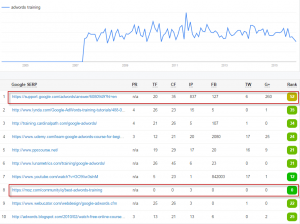
People vector created by freepik
Last week my client, Jill (not her real name), began her coaching session with:
“If one more person tells me to meditate or do yoga, I will punch the wall.”
I paused. She chuckled. We both laughed. Irony, right?
This is what her manager told her to do in response to her frustration with an unrealistic workload and feeling overwhelmed with…well…everything. She built up the courage to talk to her boss and was told to do some downward dogs.
The boss meant well. It’s even likely they were feeling equally as tense and not in the mindset to support someone else. We have all been there.
Stress is as American as ranch dressing. Since 2007, the American Psychological Association has released an annual report called Stress in America. The pandemic and our country’s racial reckoning has exacerbated our already monumental problem. The internet is filled with link after link on how to relieve it.
If it is not stress, then it is resilience. The other buzz word infiltrating our feeds.
The imagery that is shown to represent resilient people is often misguided. We see a person meditating on a mountain top…alone. A runner charging down the open road…alone. The employee delivering that stellar presentation to the board and receiving the applause that follows…alone. This makes very little sense.
It misses the critical elements of resilience: relationships and positive social interaction. Other people.
I know this is hard. Every ounce of our American “just work harder / just hustle / just do it” brain is thinking we can go at it alone. We don’t need help. We can do this. We can bounce back. But the fact is, our resiliency is fueled by healthy relationships which are integral to our well-being. Yet, what is presented to us is a representation of being solitary.
Jill, who is ready to punch walls, went to her boss to seek support. In our coaching session she revealed that her objective wasn’t for the situation to be “fixed”, rather she wanted her boss to listen. Support her. Brainstorm ways to change things so she would be less stressed, maybe laugh with her at the craziness of it all. For many reasons, this boss missed the mark.
Resilience, the capacity to recover quickly from difficulty, is a team sport. To be resilient, there must be other people involved to build and maintain it.
Identify Your Stress
Being able to name our experience is important to addressing it. A white paper from the Human Performance Institute (HPI) has a great way of breaking it all down.
- Normal Stress – Day to day irritations or obstacles, e.g. connectivity issues during a video call, missing an important meeting, or losing track of your phone, again.
- Training Stress – Intentional challenges. This is acute stress (short but intense). Such as, a new job or covering for a colleague who is on leave. This expands our comfort zone and has an end point.
- Excessive Stress – This is chronic stress that continues to build and accumulate over time. It is the most destructive to our health and well-being. It looks like continuous 12-16 hour workdays without a break, extended periods of uncertainty (e.g. financial or food insecurity), or being marginalized your entire life. Notice, most of the stressors are out of your control.
If you find yourself in the Excessive Stress category, this is the time to seek support. It could be a coach, pastor, therapist, mentor, or physician. If you haven’t talked to someone else about your experience (not your friends and family, rather someone trained to listen) it is time. Your mental, emotional, and physical health depend on it.
Oscillation, Stress, and Recovery
After decades of research, the Human Performance Institute (HPI) has confirmed one of the ways to build resilience. It is a process by which we strategically recover from stress, called oscillation. This is to shift between energy expenditure (stress) and restoring energy (recovery). HPI identified this process in high performing athletes and translated it to the working world.
In the simplest terms, take breaks.
It sounds elementary, even a little ridiculous. Yet, the research is undeniable. Taking short, intermitted breaks throughout the day enables our body and mind to recover from this energy expenditure (Normal and Training Stress). As a result, we make better decisions, think more critically, and prioritize effectively. Most importantly, we can end our day with energy left over for the people or activities we enjoy.
Ideally, take a break every 60-90 minutes. Make it physical and better yet, go outside (though it may not be feasible, that’s ok.) 5-10 minutes is enough. Get up, walk around, march, stretch, breathe deep, channel Richard Simmons and dance to some oldies. It doesn’t matter but remaining seated behind a screen (handheld or desktop) does not count.
Take these breaks routinely throughout the day. This is the best way recover quickly from normal and training stress. To learn more, read this article. It covers the entire concept of stress, resilience, and oscillation nicely.
Informal Networks
The real game-changer in building and maintaining resilience is other people.
My client, Jill, has kids at home distance learning and a spouse also working remotely with an equally demanding job. This has left her with the paradox of never being alone but feeling extremely lonely. Many of her colleagues are not in the same situation and her boss is divorced with adult children. She often feels lost without anyone to turn to.
Colleagues, friends, and mentors all help us get through challenges. They remind us of the meaning of our work and give us the energy to begin anew another day. These are not people who complain with us, rather they help us see our situation in different, and productive ways.
Jill had left relationship building by the wayside while having little kids, but now realizes the impact of that. Continuously cultivating supportive, professional relationships is the current focus of her growth and development.
Cross, Dillon, and Greenberg (whose research is not yet published) found that those most resilient had people in their network who fulfilled different support needs. These eight “sources of resilience” are not universal, and one may not need/have all eight. Yet, they provide a diverse array of support to assist anyone with recovering in time of difficulty.
As you review these eight sources of resilience below, think about who in your network provides you with this support. Also, think about what you are missing and what role might need to be fulfilled:
- Empathy – People who understand me.
- Humor – Those who let me laugh at myself and the situation; those who can find humor anywhere.
- Purpose – People who keep me connected to the meaning of my work.
- Perspective – Those who help me maintain perspective when there is a set-back.
- Vision – People who help me see a path forward.
- Pushback – Those who help me stand up for myself and challenge what is asked of me.
- Politics – People who help me navigate the unwritten rules and norms.
- Work Surge – Those who help me manage workload.
What if you reviewed this list and only have one or two of the eight? What if you have one person who fills the role of all eight? Here are a few tips to begin to broaden your network:
- Strive to improve your network by one. Select a category and identify one person who might fill one of the roles you from which you would benefit.
- Send an email and praise something about their work. This isn’t flattery, it is demonstration of respect. It will make you feel good and them.
- Invite them to have a virtual coffee. It sounds like a date, and it is but platonic. Just say “I’d like to get together and hear how you’re doing.” (Use whatever words sound like you.)
- Before meeting, prepare what you want to learn or ask about in advance.
- Meet and before wrapping up ask to get together again in a month. Set the meeting before concluding the call.
This is a formal structure to initiating a connection. You can decide what is needed but starting out formal usually leads to more informal interactions later.
Unfortunately, given the extensive history of stress in our society, this issue is not going away. We will continue to experience difficulty; it is the human experience. Though, we can work to improve the way we respond to that difficulty. We will likely need direct one-to-one support, such as a coach, therapist, or mentor and we will need the support of many others.
Don’t go at it alone. Your resilience depends on it.
This article was originally published on the Growth Partners Consulting blog.
Business & Finance Articles on Business 2 Community
(22)







